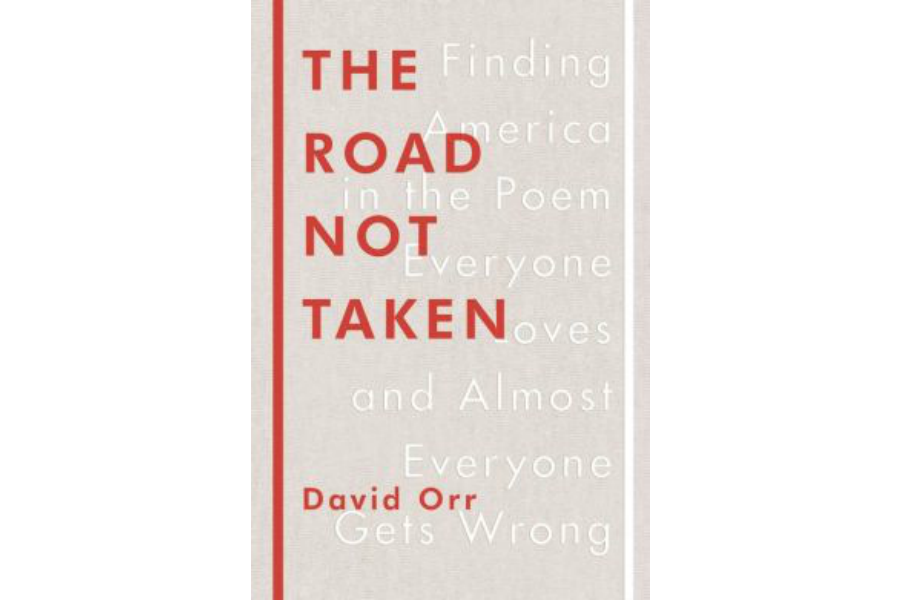'The Road Not Taken' reveals the unexpected in Frost's most famous poem
Loading...
Good poetry thrives on ambiguity. In The Road Not Taken, critic David Orr argues that Robert Frost’s oft-quoted poem about two paths diverging in a yellow wood remains so powerful precisely because it remains so ambiguous, and that the differing interpretations this ambiguity has allowed for tell us many things—not just about Frost’s poem but about American culture and what it means to be a modern self.
Citing the frequency of Google searches as evidence, Orr argues that Frost’s “The Road Not Taken” “may be the most popular piece of literature ever written by an American.” In particular, the poem’s final three lines – “Two roads diverged in a wood, and I – / I took the one less traveled by, / And that has made all the difference” – are recited by schoolchildren, parroted by politicians, and intoned in commercials.
Orr’s interest lies less in the frequency with which these lines are quoted than in the contradictory interpretations to which they have given rise. In the more popular, naïve reading, “The Road Not Taken” is “a paean to triumphant self-assertion,” a celebration of the speaker’s choice to boldly go where few men have gone before. In the more sophisticated, ironic reading, however, the poem satirizes this heroic vision of the self.
At the beginning of the poem, after all, we are told that the two roads aren’t all that different. As Orr puts it, the speaker claims that his decision “made ‘all the difference’ only because this is the kind of claim we make when we want to comfort or blame ourselves by assuming that our current position is the product of our own choices.”
In one reading of the poem, Frost offers “a salute to can-do individualism”; in the other, he offers “a commentary on the self-deception we practice when constructing the story of our lives.”
Which of these readings is correct? Orr claims that this is the wrong question to ask. The second, jaded reading is more correct – it’s the one that Frost himself claimed to have intended – but it’s not the only possible reading. Orr is fascinated by why so many have read this poem so positively for so long, and what this fact reveals about the American soul.
"The Road Not Taken" consists of four major parts. In “The Poet,” Orr offers a potted if punchy biography of Frost: his early struggles; his sudden ascension to fame at the age of forty with the 1914 publication of "North of Boston"; his tendency towards cruelty and megalomania – traits that belie Frost’s popular image as a folksy country wise man. In the second section, entitled “The Poem,” Orr traces, in fine detail, how Frost makes such a short, seemingly simple lyric bear so much weight.
The book’s final two sections show why “The Road Not Taken” has resonated so powerfully within American culture. “American optimism,” Orr writes, “is rooted in American confidence in individual decision making,” and this poem, above all else, embodies the philosophical problem of choice. Do we make decisions for ourselves, or are our lives determined by forces—historical and cognitive—beyond us?
Parts of "The Road Not Taken" are a bit thin, as if it were a magazine article stretched out to book length. (Orr is a poetry critic for The New York Times.) The middle section in particular relies far too heavily on summaries of cognitive science research. This is too bad. Orr doesn’t need neuroscience to make Frost’s work sexy; his own analysis – lucid, intelligent, and persuasive – is enough.
In the book’s most exciting sections, Orr uses a powerful critical tool: the counterfactual. Again and again, he asks, how might this poem have been written differently? What if Frost had chosen this word instead of that?
In imagining the poetic road that Frost did not take, Orr helps us to understand more powerfully the road that he did take. When considering the titular poem’s conclusion, for example, Orr writes two alternate endings, one purely optimistic and another purely pessimistic.
This thought experiment reminds us that Frost chose neither such ending. “The Road Not Taken” isn’t the clichéd defense of individualism that it’s often read to be, but it isn’t simply a satire on how we justify our decisions ex post facto, either. Rather, the poem exists in the space between these two readings. It forces us to hold different stances towards matters of ultimate concern: the nature and possibility of choice; how we live and narrate a life.
In Orr’s reading, “The Road Not Taken” is less about a single choice than about the nature of choice itself. It’s less about a road than about a crossroad – a place of the “betwixt and between” that is “neither here nor there; it is a possibility.







